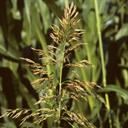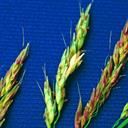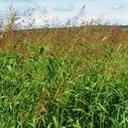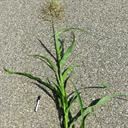Perennial Sorghum Species
Information
Johnsongrass: Sorghum halepense - Poaceae Family
Sorghum-almum (Columbus grass): Sorghum almum parodi - Poaceae Family
Sorghum grasses include many different variants and can hybridize easily with each other. Johnsongrass and Columbus grass are two species with particularly invasive habits.
Identification of Columbus grass
- Flowers: Loose, branching clusters growing 6-24 inches long with lax, spreading branches. Panicles droop as seeds grow larger.
- Seeds: Reddish-brown to black, oval, 0.25-0.4 inches long.
- Leaves: Leaves are 2.5-4 cm. wide and waxy. Stems are 1 inch thick and can reach up to 14 feet tall.
- Flowering Time: June to September.
- Life cycle: Perennial that spreads via thick short rhizomes.
Impacts of Columbus grass
- Native to South America, Columbus grass is a hybrid between Johnsongrass and Grain sorghum.
- Columbus grass was intentionally grown as a forage crop in Australia, but escaped cultivation and now can be found infesting ditches, canals, fields, pastures, and roadsides.
- Columbus grass quickly establishes in disturbed soils, sending out underground runners that sprout many stems and quickly form dense stands.
Identification of Johnsongrass
- Flowers: An open panicle with thousands of spikelets.
- Seeds: A single plant may produce more than 80,000 seeds in a single growing season, and 275 feet of rhizomes.
- Leaves: It has wide leaves with a thickened whitish midrib. The leaf ligule is jagged and membranous.
- Flowering Time: June to September.
- Life cycle: Johnsongrass is a hardy 2-8 foot tall perennial that spreads through seed and creeping lateral root systems. In addition to a typical fibrous root system, Johnsongrass produces thick cream-colored rhizomes, covered with orange scales.
Impacts of Johnsongrass
- Originally introduced as a forage grass from the Mediterranean. Unfortunately, under frost or moisture stress, it becomes toxic to livestock.
- Johnsongrass is primarily a weed in row crops and can reduce crop yields in corn, sorghum, soybean, and cotton.
Control
Most effective control methods for Columbus grass
- Small infestations of Columbus grass can by removed manually by digging up individual plants. Care must be made to remove as much of the plant as possible, as stems will regenerate from rhizomes left in the ground. Repeated tilling can also be effective.
- Larger infestations require a combination of control methods. Cultivate in the summer before seeds heads form, then apply herbicide on regrowth.
- In pastures, spot spraying and maintaining a strong and competitive pasture will help prevent infestation.
- Chemical control can be effective against Columbus grass when plants are actively growing. Herbicide treatment is particularly successful on seedlings and young plants before they flower.
Most effective control methods for Johnsongrass
- Preventing Johnsongrass from becoming established in new areas is the best available control method, because the weed spreads in so many ways. Because Johnsongrass is a perennial weed, single cultural control measures or herbicide applications rarely provide adequate control.
- To reduce Johnsongrass infestations with herbicides, it will be necessary to use an integrated approach consisting of soil-applied herbicides, post emergence herbicides, crop rotation and tillage.
Large Images
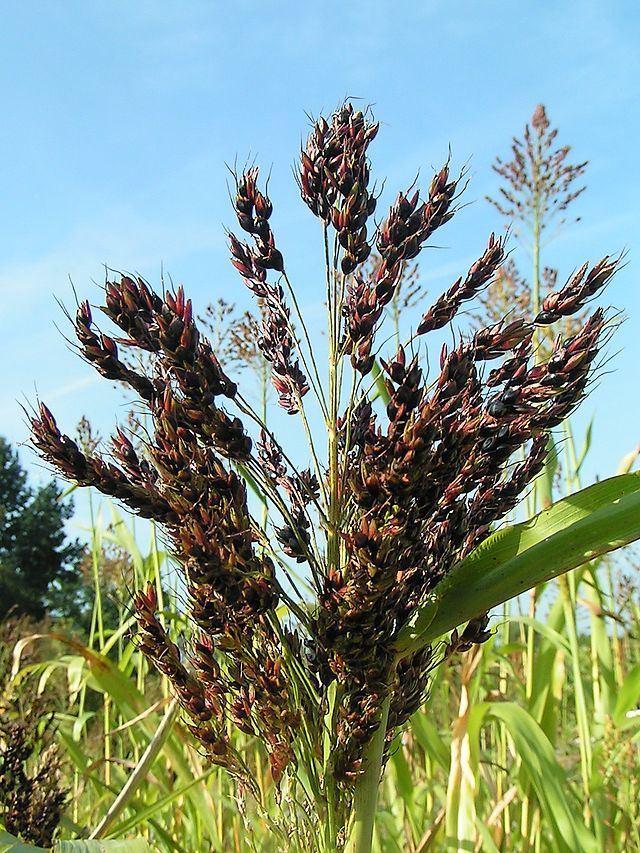
Columbus grass: going to seed
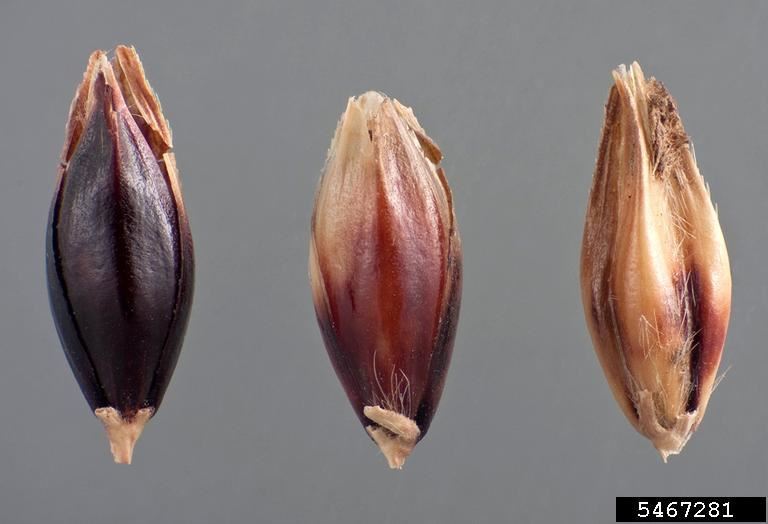
Columbus grass: seeds
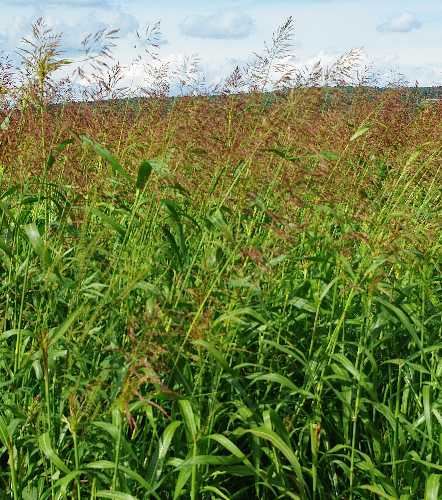
Columbus grass: infestation
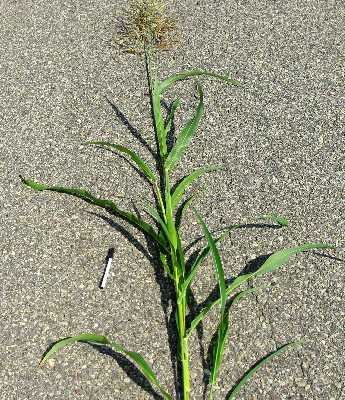
Columbus grass: stem, foliage, and flowers
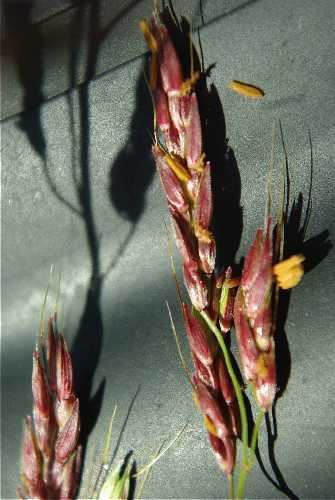
Columbus grass: seeds
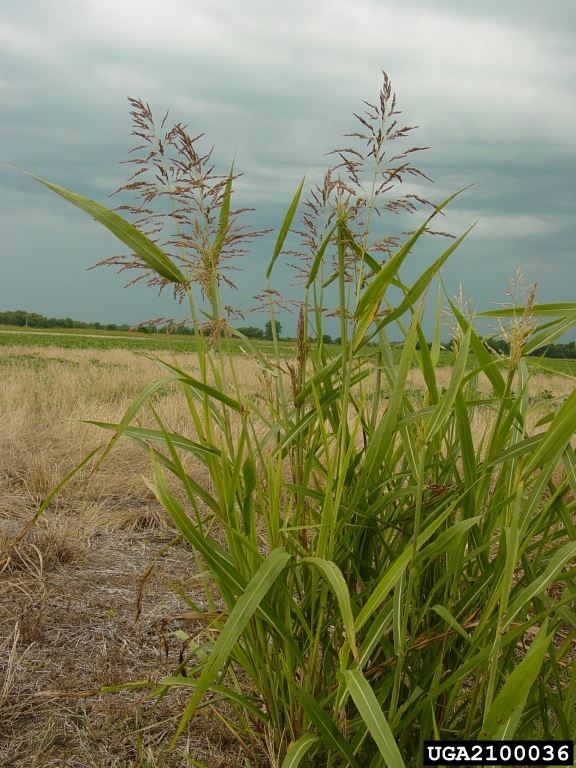
Johnsongrass
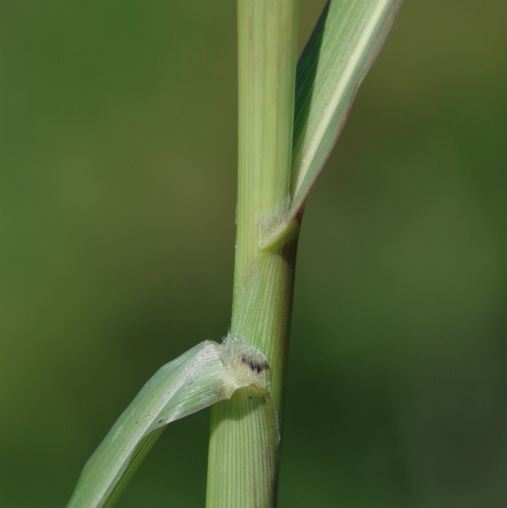
Johnsongrass: stem and foliage
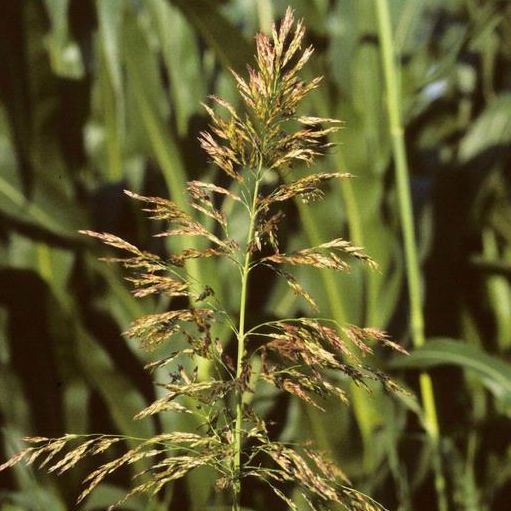
Johnsongrass: flowers
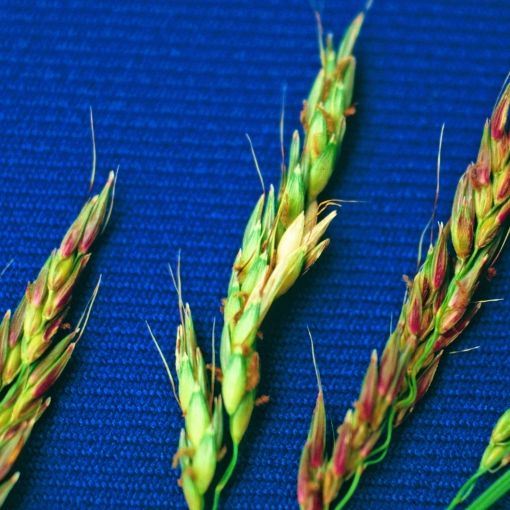
Johnsongrass: fruit
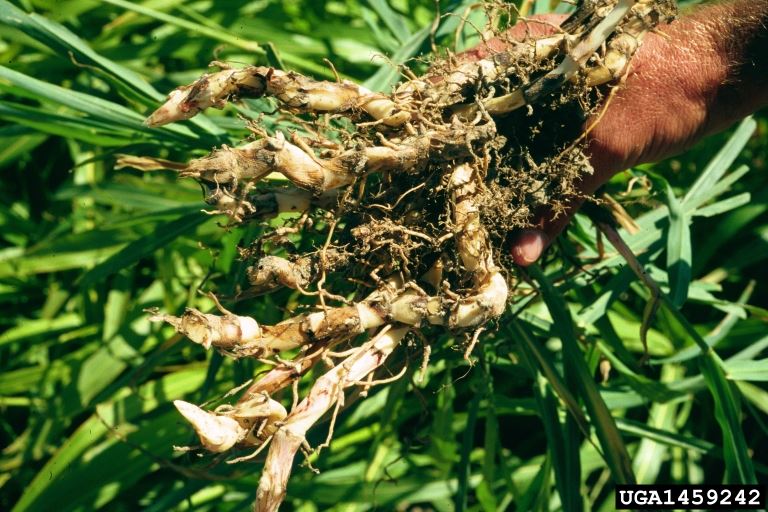
Johnsongrass: roots
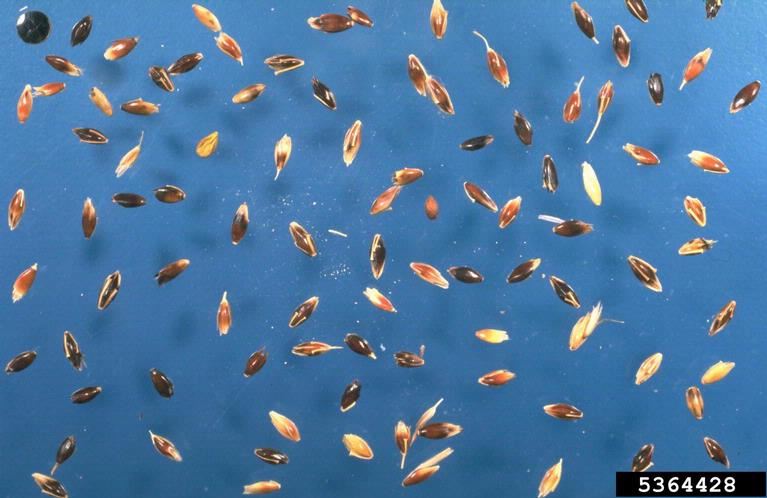
Johnsongrass: seedlings
Resources
-
References
Global Invasive Species Database. (2010, October 4). Sorghum halepense. Retrieved from http://www.iucngisd.org/gisd/species.php?sc=213
Heuze, V., Tran, G., & Baumont, R. (2015). Columbus grass (Sorghum x almum). Retrieved from https://www.feedipedia.org/node/378
Howard, J. (2004). Sorghum halepense. Fire Effects Information System. Retrieved from https://www.fs.fed.us/database/feis/plants/graminoid/sorhal/all.html
Invasive Species Compendium. (2018, July 14). Sorghum halepense (Johnson grass). Retrieved from https://www.cabi.org/isc/datasheet/50624
Michigan State University. Columbus grass (Sorghum almum). Retrieved from https://www.misin.msu.edu/facts/detail/?project=&id=383&cname=Columbus+grass
Newman, D. (2015, February 17). Sorghum halepense. Retrieved from https://wiki.bugwood.org/Sorghum_halepense
Osmond, R. (2014) Columbus grass (Sorghum x almum). Retrieved from http://weeds.dpi.nsw.gov.au/Weeds/Details/44
Warnert, J. (2016, March 4). Invasive superweed Johnsongrass is the target of a new nationwide research effort. Retrieved from http://ucanr.edu/blogs/blogcore/postdetail.cfm?postnum=20399
United States Department of Agriculture. (2015, August 12). Weed Risk Assessment for Sorghum halepense (L.) Pers. (Poaceae) – Johnsongrass [PDF file]. Retrieved from https://www.aphis.usda.gov/plant_health/plant_pest_info/weeds/downloads/wra/sorghum-halepense.pdf View PDF
